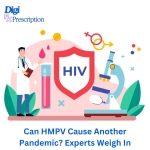
Can HMPV Cause Another Pandemic? Experts Weigh In
Human Metapneumovirus (HMPV) is a respiratory virus that has been gaining attention for its impact on public health, especially during seasonal outbreaks. While HMPV has been recognized as a significant cause of respiratory infections, concerns are emerging about its potential to cause widespread outbreaks or even another pandemic. Experts in virology and infectious diseases are weighing in on whether HMPV could pose a global threat and what measures could mitigate its spread.
What is HMPV?
HMPV, or Human Metapneumovirus, is a respiratory virus first identified in 2001. It is part of the Paramyxoviridae family, which includes other respiratory pathogens such as RSV (Respiratory Syncytial Virus). HMPV primarily affects the respiratory system and is a leading cause of infections in children, older adults, and individuals with compromised immune systems.
How HMPV Spreads
HMPV spreads through:
- Respiratory Droplets: Coughing or sneezing releases viral particles into the air.
- Surface Contact: Touching contaminated surfaces and then touching the face can spread the virus.
- Direct Person-to-Person Contact: Close contact, such as handshakes, can transmit the virus.
Its mode of transmission is similar to other respiratory viruses, which makes it highly contagious in crowded environments like schools, hospitals, and nursing homes.
Could HMPV Cause Another Pandemic?
While HMPV is a significant public health concern, experts believe its potential to cause a pandemic is relatively low compared to viruses like SARS-CoV-2 (COVID-19). Here's why:
-
High Infection Rates but Low Pandemic Potential
HMPV has been circulating for decades and is not a new virus. Its spread is generally seasonal, peaking in late winter and spring. Unlike COVID-19, which was a novel virus with no pre-existing immunity in the population, many people already have some level of immunity to HMPV from previous infections. -
Population Immunity
Most children contract HMPV by the age of five, developing some immunity to the virus. While reinfections can occur, they are often less severe in healthy individuals. This widespread exposure reduces the likelihood of a global pandemic. -
Limited Severe Cases
Severe cases of HMPV are primarily seen in high-risk populations, such as infants, older adults, and those with underlying health conditions. For the general population, HMPV typically causes mild respiratory symptoms, reducing its potential for widespread, severe impact. -
No Evidence of Rapid Mutation
Unlike viruses such as influenza or coronaviruses, HMPV has shown limited evidence of rapid genetic mutation. This stability makes it less likely to evolve into a highly transmissible or deadly strain capable of causing a pandemic.
Public Health Concerns
While HMPV may not cause a pandemic, it remains a public health concern for several reasons:
- Strain on Healthcare Systems: During seasonal surges, hospitals may see increased admissions, particularly for children and older adults with severe respiratory symptoms.
- Lack of Targeted Treatments: There is currently no vaccine or specific antiviral treatment for HMPV, leaving high-risk groups vulnerable.
- Co-Infections: HMPV can exacerbate illnesses when combined with other respiratory viruses, such as RSV or influenza, leading to severe outcomes.
Preventing the Spread of HMPV
Although HMPV is unlikely to cause a pandemic, its seasonal outbreaks can be mitigated through preventive measures:
- Hand Hygiene: Regular handwashing with soap and water is crucial.
- Respiratory Etiquette: Encourage covering the mouth and nose when coughing or sneezing.
- Cleaning and Disinfection: Regularly disinfect commonly touched surfaces.
- Avoid Crowded Spaces: Especially during peak HMPV season.
- Protect High-Risk Groups: Ensure older adults and children with chronic conditions avoid exposure to sick individuals.
The Role of Public Health and Research
While HMPV’s pandemic potential is low, it underscores the need for continued research and public health preparedness. Developing vaccines and antiviral treatments for HMPV could reduce its burden on healthcare systems and protect vulnerable populations.
Public health campaigns emphasizing hygiene, vaccination for co-infections like influenza, and early diagnosis can also help manage the seasonal impact of HMPV.
Conclusion
HMPV is a serious respiratory virus, but experts agree it is unlikely to cause another pandemic. Its seasonal nature, pre-existing population immunity, and limited mutation potential make it less threatening than novel viruses. However, its impact on high-risk groups and healthcare systems highlights the importance of continued awareness, research, and prevention strategies. By adopting proactive measures, we can minimize the impact of HMPV and protect vulnerable populations.
